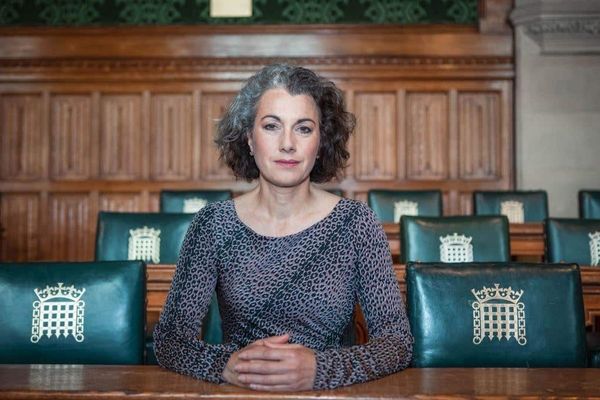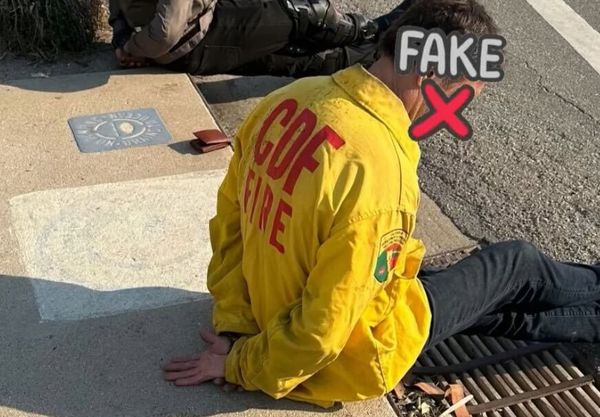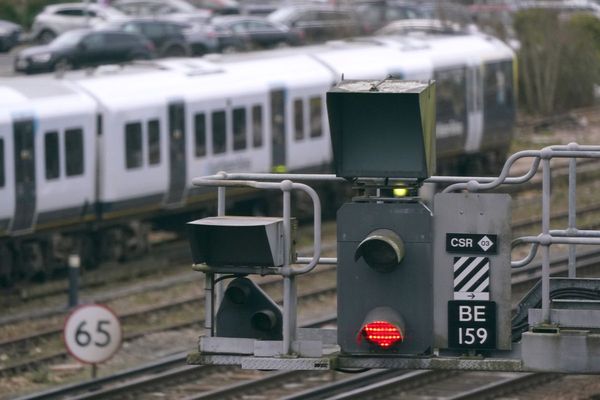A Doll Like Me is a non-profit organization run by a woman named Amy. She creates unique dolls for unique children, who can finally feel represented.
This year, A Doll Like Me is celebrating its 10-year anniversary. Over those years, Amy has managed to send over 2000 dolls to all 50 states and at least 35 different countries. And to add to the greatness, for most of the ten years, no one has had to pay for their doll. Amy thinks that every child deserves to get these dolls free of charge, and so to cover the costs, a lot of the funds come from community sponsors, private individuals, or groups.
If you feel like this mission makes your heart happy, feel free to consider supporting this organization so that more kids can get such a special toy.
More info: Instagram | Facebook | adolllikeme.com
#1

Image credits: a_doll_like_me
Bored Panda reached out to Amy to learn more about this project and a story or stories that really touched her heart.
“One of the really unique parts of A Doll Like Me is that it’s a very personal relationship, so I get to know the families fairly well. Because, they’re telling me about their child, and then I’m trying to capture it in a way that we both feel represents their child.Amy shared that parents tell a lot of stories about their kids, therefore each doll becomes precious to the creator. “And it’s simply because every doll tells a story of a child, who has been through some pretty incredible things,” added Amy.
However, when asked what’s the most difficult doll that she has made, Amy wrote:
“The most difficult dolls and the ones actually do take the longest are the ones that have really heavy stories that go with them. Particularly when the child I know is terminal and probably won’t live through the year. And those are very hard to make, because, you know you’re staring at those pictures of a child trying to capture them and the essence of who they are, knowing they’re living on borrowed time, and that’s always the hardest ones.”
#2

Image credits: a_doll_like_me
#3

Image credits: a_doll_like_me
“It is really important, I tell people, the dolls aren’t just dolls. It becomes a representation of the child, and so, I’ve had a number of families send pictures to me later of siblings taking the doll to bed after the child has passed away. Because it’s a physical reminder of their sibling or their child.
They tend to just be so heart-wrenching, and it shows you that families also believe that this is more than just a doll. It really is a representation of the child. There is a family that did holiday photos, and the doll was also in the photo because the child was no longer alive, and those just hit really hard. There’s always a person behind this.”
#4

Image credits: a_doll_like_me
#5

Image credits: a_doll_like_me
Amy also commented about the importance of these dolls to the kids: “Social media has just been amazing for me. Because I can reach people all over the world, and when you think about what inclusion looks like and more specifically, what inclusion looks like to a child. And this is what it looks like to reach kids in the world that they know and understand the best, and that’s toys. And so if we want to be really an inclusive society, we have to offer kids toys that they look like they do, and we have to offer toys to other kids that don’t look like them.
It’s changing, and in recent years, I think that it’s changed a little bit, and you see dolls with limb differences or perhaps in a wheelchair, which is great. And we need more of that, we need to see kids of different body sizes and facial differences and medical equipment, all of those things need to be in the places that matter, like books and movies and TV shows and toys.”
#6

Image credits: a_doll_like_me
#7

Image credits: a_doll_like_me
Amy continued and also touched on the subject of sending the toys to different countries: “Any parent wants what they think might help their child, and when you learn the importance of being seen, I think, naturally parents want that for their kids. So I received requests from all over the world. And the other day someone sent something from Lithuania and that was a new one for me. Because we all have this need to be accepted and to feel like we’ve been seen. And that transcends culture and age, and ethnicity. And that’s why I think I get requests from everywhere.I wish that I was personally going all over the world, what a thrill to be able to do that for kids.”
#8

Image credits: a_doll_like_me
#9

Image credits: a_doll_like_me
We were wondering about how Amy makes sure that the dolls represent not just physical differences but also the cultural backgrounds of the children who receive them.
She said: “If you look at photos of people, you can see how many different skin tones there are. And so kids need to see their skin tone reflected in the dolls they play with. We have this standard that needs to be turned on its head about what beauty is and what skin color reflects perfection or beauty. And that’s so damaging for kids, so first of all, you wanna talk about skin tone. I think I have at least 20 different skin tones that I can pick from, and I’m always looking for new ones because everybody looks slightly different. Even in the same family.”
#10

Image credits: a_doll_like_me
#11

Image credits: a_doll_like_me
“In terms of cultural background, on the surface, when I dress the doll, I make them reflect the culture they're going to. More than that, an interesting side development of making the doll is that it gets people to talk, whatever the difference that I’m making in a doll. So, for example, there was a little girl from Mexico, she has an amputated leg, and the mom said, the grandparents didn't want the doll because they didn’t want to celebrate, which is considered an embarrassment. And it was really interesting because the more we talked about it, the more that would be even more of a reason why this little girl needed to have something that represented her. Not only the little girl felt validated but the grandparents came around.”
#12

Image credits: a_doll_like_me
#13

Image credits: a_doll_like_me
“There were four dolls that went to Russia, and the mom, who was originally from the US, said that the limb differences weren’t something they thought about. So they had to find children who had limb differences because it was something that you hid away. She knew of 3 other families, and she felt that it was really important for them to have these dolls. We couldn't figure out how to get them to her, so we had to wait until she came here for a visit (2-year process), and the kids eventually got them.”
#14

Image credits: a_doll_like_me
#15

Image credits: a_doll_like_me
We asked Amy to tell us about one special doll and the child it was made for.
She shared: “Every doll tells a story about a pretty remarkable child. Some kids have been through things as adults we could never even imagine. But there was one little girl who was a refugee from Syria and was also burned in a fire, so a community in Germany took the family in and that was who requested the doll. One of the things they wanted to have for this little girl to cope, was a doll. When she first sees a doll, she didn’t actually realize that it’s her and then slowly realizes that it actually does look like her and is so happy to have been represented in this way. And she says, ‘I’m gonna take it to kindergarten tomorrow to show to other kids.’”
#16

Image credits: a_doll_like_me
#17

Image credits: a_doll_like_me
“Before making the dolls, I was a social worker with kids who had cancer, and part of what you do with kids in a hospital setting is play therapy. This story is kind of the essence of play therapy that she needed to work through her grief and trauma and learn to love the new version of herself.
These aren’t just dolls to the kids, particularly to the kids that have been through pretty serious trauma. There is a little one who recently received the doll in Israel and another one who was evacuated from Gaza. And I think that the most humbling feeling for me is knowing that this is happening on the other side of the world and we can and have become so isolated. And making dolls like that is very difficult. I could easily imagine that this child is the same age as my children. So, it’s very sobering to know what kids go through on a daily basis.”
#18

Image credits: a_doll_like_me
#19

Image credits: a_doll_like_me
Amy also told us more about how she works with families to make sure each doll fits the child's needs.
“Usually, it’s a family that reaches out to me, though more and more, it would be like a teacher or a therapist or a doctor. But most often, it’s the families that reach out and say: Here is the situation, my child has a limb difference, can you make a doll? Or that my child has cancer. They’ll send lots of pictures, particularly if there are scars that the child has or medical equipment. A lot of times the dolls have the medical equipment that the child has. Because again, that’s what’s helpful with play therapy.
You can't tell a child who f.e. is an African American child with cancer, and he has a feeding tube, maybe - pretend that this blonde-haired princess doll is you. We’re gonna play therapy showing what the procedures will be.”
#20

Image credits: a_doll_like_me
#21

Image credits: a_doll_like_me
As for the future, Amy reflected on her dreams and vision.
“I never imagined 10 years ago that doing this from my dining table would become first of all, worldwide and second of all, that it would become a point of advocacy. I love being able to use the dolls to advocate for a change in the way we see people and where we see them.
It’s long overdue for me to expand A Doll Like Me, and unfortunately, it comes down to funding that I can’t afford to hire help. But my demand for dolls far exceeds my ability to pay for them. And I hate that piece. I managed ten years to go without talking about that piece.I have lots of ideas for more directions that this could go, and more ways to push inclusivity. On the same token I love to hear people’s stories cause I think that’s what makes this unique.”
#22

Image credits: a_doll_like_me
#23

Image credits: a_doll_like_me
Lastly, Amy added: “First of all, I’m so grateful and so humbled to do this for kids. One thing that I think that I’ve learned is how much we take things for granted in terms of inclusivity. Like my daughter, who is blonde with blue eyes, she is represented. But what about the kids that don’t have that skin tone, don't have the same hair, have scars or birthmarks or burns or medical equipment? We do kids such a disservice in that way. I would want readers to understand that we all need to demand better for all of our kids.
The people that follow the dolls are just the nicest, kindest people. I have the best followers, I really do, and for that, I’m just so grateful. And I love that people support this mission.”
#24

Image credits: a_doll_like_me
#25

Image credits: a_doll_like_me
#26

Image credits: a_doll_like_me







